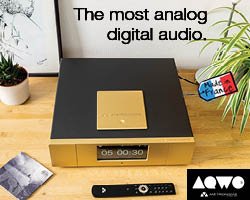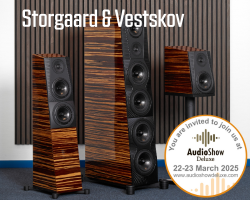Price £159 (£204 with optional Class A PSU)
I’m pretty much on my own with this one. A quick poll at Hifi Pig HQ confirms what I already know – I’m the only one here who can get worked up about computer audio. 
It makes sense to me. It works. I buy a CD, I rip it to a NAS hidden in a cupboard and then access the file through either my Sonos network or a ‘stealth’ spec laptop modded to run as quietly as possible. The CD goes onto a shelf (in alphabetical order of course) and the whole shooting match is controlled by my iPhone or iPad. I had some set up teething problems but the advantages far outweighed the odd technical hitch. All my tracks in one place, on one screen. I won’t miss collecting up all those silver discs with a hangover after an impromptu back to mine on a Friday night and PC audio was the key to the hallowed gates of high resolution audio, with files encoded at 24/192 as opposed to the Cd Redbook industry standard 16/44. Potentially a big deal.
I’d been happily using a superb little Behringer UCA202 to convert the USB signal into an optical feed for my long term Quad CDP2 but I’d started seeing a Resolution Audio Opus 21 ‘player and we were getting on well. A break up conversation with the Quad was inevitable but whilst my new love was equipped with a Coaxial digital input capable of 24/96 sample rates this was the only way into the excellent DAC stage.
Cue the M2tech Hiface. The “go to” USB to Coaxial converter for many adopters, this unassuming memory stick style adapter boasts asynchronous circuit design, (taking the timing of the signal away from the PC clock and counteracting jitter), the ability to decode 24/192 files and features proprietary software/drivers written to combat the limitations of the windows audio drivers. It arrived in a small box on Wednesday morning. My day off and so time for a listen.
As A/B tests go this one should be pretty easy to set up. The Opus 21 is feeding a signal from either CD or the Hiface connected digital into the Audio Note Oto amplifier and AN-e speakers that I listen with day in and day out. A lossless rip of the file can then be compared with the CD original at the press of a button on the remote control. Cool. A quick dress rehearsal to make sure output volume is the same from both sources and we’re in business.
Some redbook CD from the original source first. The Whitest Boy Alives fantastic ‘Burning’ is galloping along at a rate and the result is totally involving – I have to remind myself what we’re here for. I cue up and switch. The resulting sound is thinner, with less impact. Hollower maybe. Obviously we’re talking about a few percent difference but it is noticeable. Not good. Another test and whilst Jason Mraz’ excellent “Halfway Home” from “Live at Lava Joes” is a spellbinding listen when spun on CD, the lossless file through the hiface sounded reedy and a bit weak. Almost dehydrated.
Days of burning in, tweaking audio settings, switching cables and auditioning different playback software made no difference. The Hiface, whist obviously working well for many users, wasn’t the solution for me. Back to Google for some shopping and a two box combo from a Chinese company, Audio GD, catches my eye. Several of their DACs had been well reviewed so let’s give it a go.
The Audio GD DI (digital interface) is a workmanlike black box measuring 42 x 160mm x 110mm (hwd) and can decode material of upto 24/96, although it can upsample to full fat 24/192. A quick look inside reveals some neat circuitry – very nice if that’s your thing. I put the optional class A separate PSU into my basket too, adding a second box and £45. The 5v rail supplying power from the USB output of a PC is notoriously noisy and I wanted to make sure this wasn’t the source’s Achilles heel. 
Asynchronous transfer technology is generally considered the best way to combat jitter when taking the signal from PC to DAC, and most current designs employ this. My new box didn’t, relying instead on designer King Wa’s clever implementation of older adaptive technology. A new spin on an existing idea isn’t the only trick the DI has up its sleeve. Jumpers inside the unit let the user adjust the sampling rate and a quick inspection of the rear panel reveals Coaxial and BNC outputs and both a USB and Coaxial Input, allowing the user to hook up Sonos or a Squeezebox to reclock the signal, setting the unit apart from most single input converters in the process. I love the user interface of Sonos but hadn’t been totally happy with the sound quality connected DAC direct. Maybe I could kill two birds with one stone.
How would this box of tricks fare given my less than satisfactory experience with the Hiface? The listening test was set up much as before. CD first. Regina Spector’s “Hotel Song” has a magical, larger than life presence on my reference system – an easy unforced energy from top to bottom that I always connect with. With some apprehension I type the name into the Jriver software and click. Those first heavy bass notes sound Ok. Then the delicate voice and the strings. I relax – its all there. The track finishes too quickly and I flick back to CD again for a few tracks from Zombys fantastic “Dedication” . The nagging, edgy, roll out of ‘Natalias Song’ loses none of its anxious presentation on the second listen and the arpegggio’ed “Things Fall Apart” seems to have all the energy and flow on both occasions. Back to that Jason Mraz tune. His voice has more weight and fullness than I remember with the Hiface and a quick A/B confirms everything is as it should be. I should at this point perhaps confess that I’ve picked CD source as the better sound in blind tests at friends’ houses previously. Not sure I could here.
Reproduction from the coaxial in with the Sonos feed is excellent too. Plenty of companies offer clock mods for this white box of tricks but maybe audition one of these before yours goes under the knife. It’s a relatively inexpensive way of getting a more natural, less digital sounding reproduction. Incidentally the DI sounds good with or without the extra cost Class A PSU. I struggle to hear difference here but that may depend on design of the PC you use.
So a keeper then? For me, yes, although I will admit to jealously reading reviews of the Audiophilio and John Kenny modded Hiface converters. My only other experience of asynchronous technology has been with the HRT music streamer II single input usb DAC and it was excellent so I should really give these (and the forthcoming Hiface 2) some house room. Truth is I’d miss the coaxial input – with this for Sonos, USB in for the laptop and the Opus 21’s excellent CD reproduction I really do have all my preferred music sources comprehensively covered.
Want to read more hifi reviews?



















































































































































































You must be logged in to leave a reply.